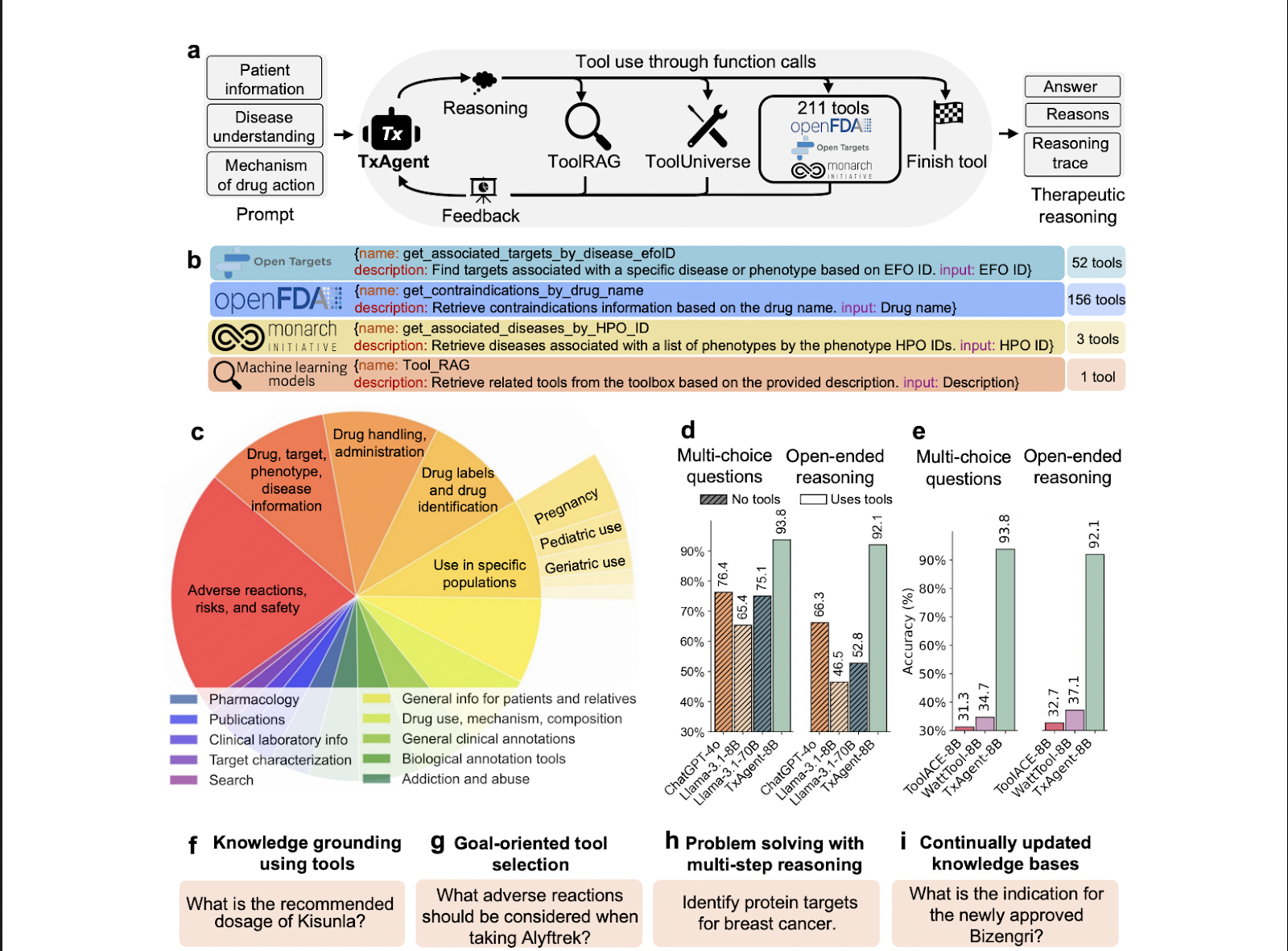
Introduction to TXAGENT: Revolutionizing Precision Therapy with AI
Precision therapy is becoming increasingly important in healthcare, as it customizes treatments to fit individual patient profiles. This approach aims to optimize health outcomes while minimizing risks. However, selecting the right medication involves navigating a complex landscape of factors, including patient characteristics, comorbidities, potential drug interactions, contraindications, and current clinical guidelines. Traditional Large Language Models (LLMs) have shown promise in therapeutic tasks but face significant challenges, such as limited access to updated biomedical knowledge and issues with reliability in reasoning across multiple clinical variables.
Challenges with Traditional AI Models
While LLMs can process medical data through pretraining and fine-tuning, they often generate inaccurate information, known as “hallucinations.” Additionally, retraining these models with new medical information can lead to catastrophic forgetting, where previously learned information is lost. The risk of incorporating unverified or misleading medical content further complicates their reliability in clinical settings.
Tool-Augmented LLMs: A Step Forward
To overcome these limitations, tool-augmented LLMs have been developed. These systems utilize external retrieval mechanisms to access updated drug and disease information. However, they still struggle with the multi-step reasoning required for effective treatment selection. Precision therapy would greatly benefit from systems that can iteratively reason, access verified information, and refine treatment recommendations based on comprehensive clinical analysis.
Introducing TXAGENT: A New Era in AI-Assisted Precision Medicine
Researchers from prestigious institutions, including Harvard Medical School and MIT, have introduced TXAGENT, an innovative AI system designed to deliver evidence-based treatment recommendations. TXAGENT integrates multi-step reasoning with real-time biomedical tools, generating natural language responses while providing transparent reasoning for its decisions.
Key Features of TXAGENT
- TOOLUNIVERSE: A comprehensive biomedical toolbox with 211 expert-curated tools that cover drug mechanisms, interactions, clinical guidelines, and disease annotations.
- TOOLRAG: An ML-based retrieval system that dynamically identifies the most relevant tools from TOOLUNIVERSE based on the context of queries.
- Multi-Agent System: TOOLGEN generates tools from API documentation, enhancing compatibility and functionality.
Case Study: Real-World Application of TXAGENT
TXAGENT has demonstrated exceptional capabilities in therapeutic reasoning. For instance, it successfully identified indications for Bizengri, a drug approved in December 2024, by querying the openFDA API directly. This capability highlights TXAGENT’s strength in accessing real-time data, ensuring that its recommendations are based on the most current information available.
Conclusion: The Future of AI in Clinical Decision Support
TXAGENT represents a significant advancement in AI-assisted precision medicine, addressing the critical limitations of traditional LLMs through multi-step reasoning and targeted tool integration. By providing transparent reasoning alongside its recommendations, TXAGENT enhances the interpretability of AI in therapeutic decision-making. The integration of TOOLUNIVERSE allows for real-time access to verified biomedical knowledge, enabling TXAGENT to make informed recommendations based on current data rather than outdated training information. This innovative approach sets a new standard for trustworthy AI in clinical decision support, paving the way for improved patient outcomes and more effective healthcare solutions.

























